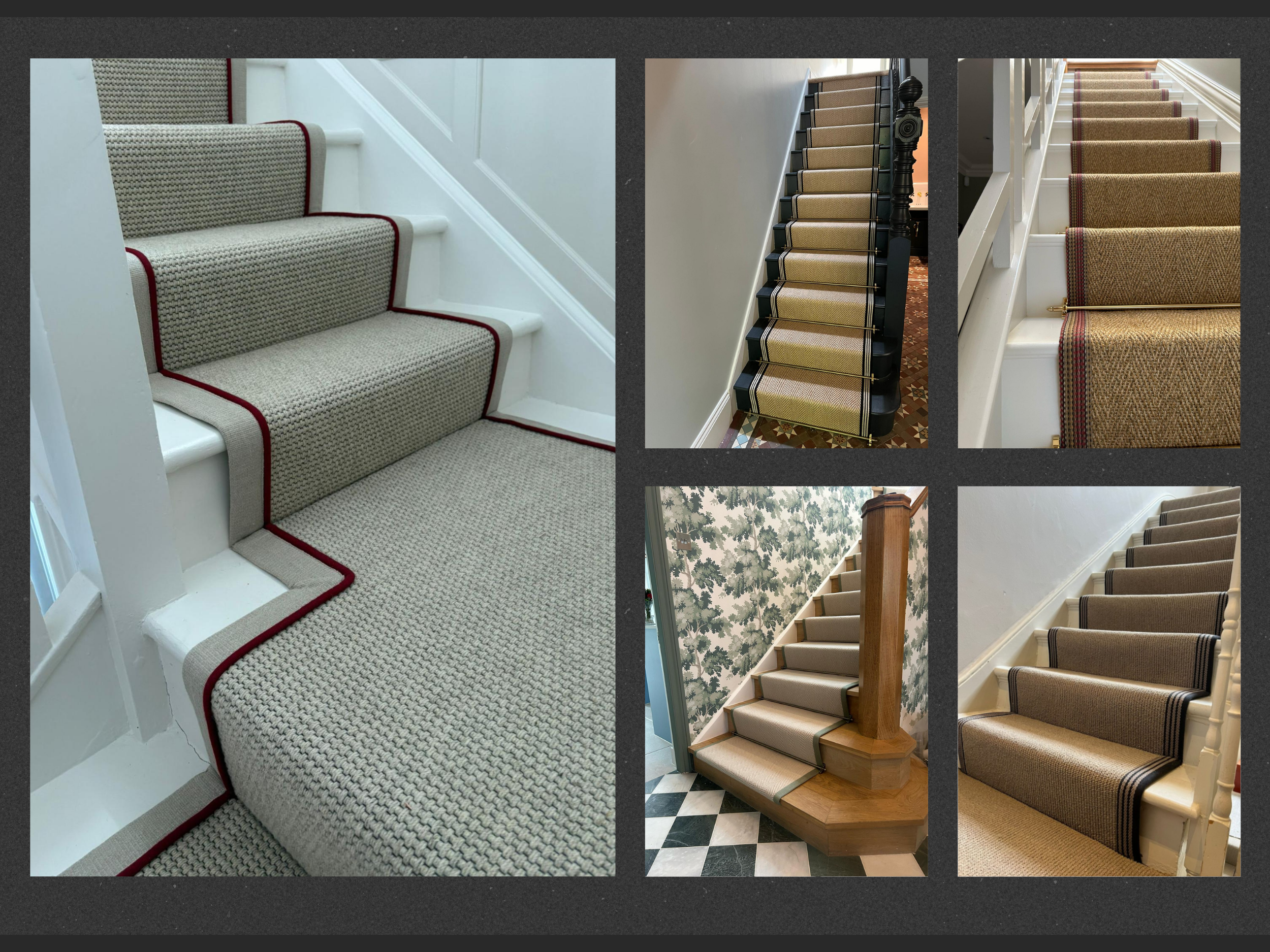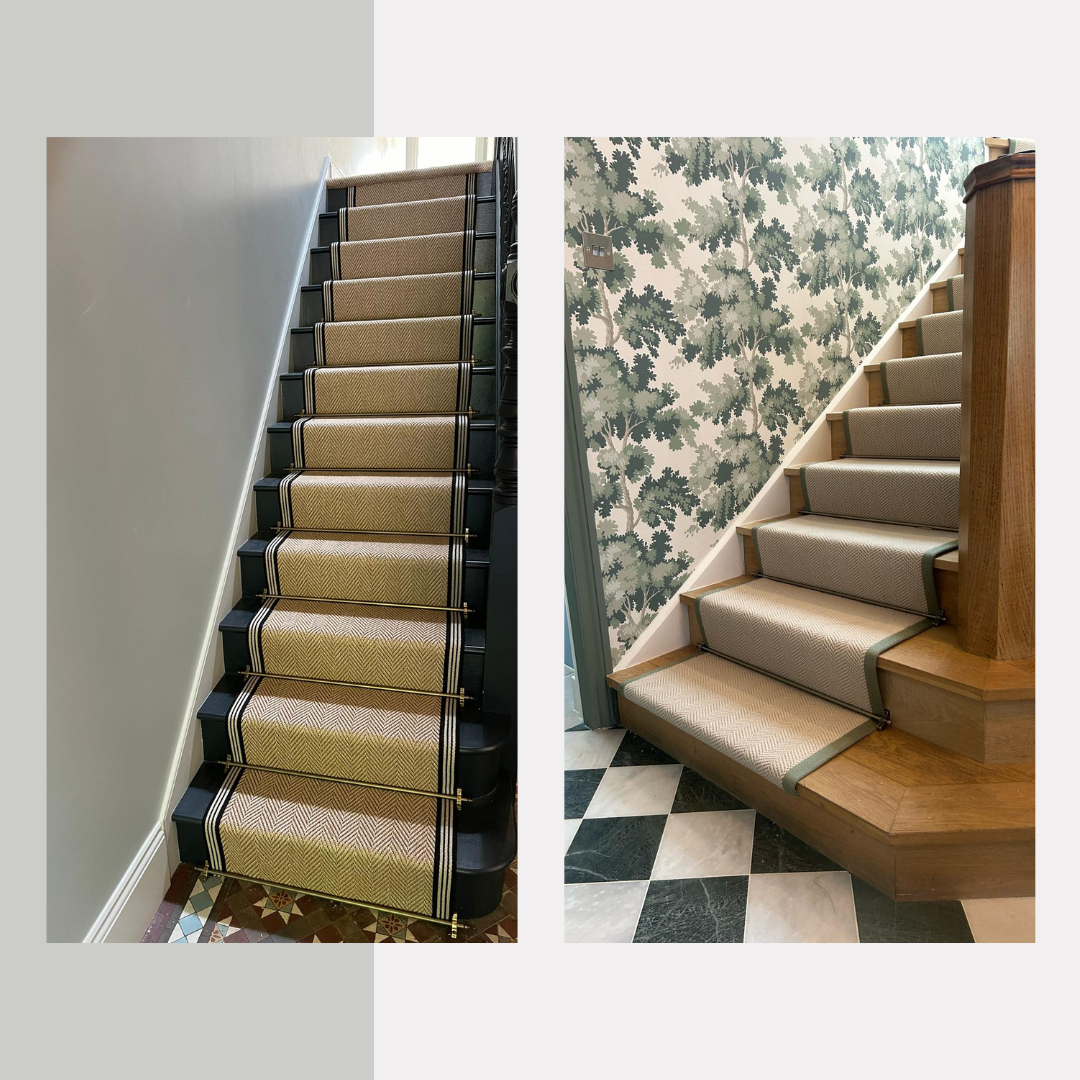Stair runner installation
A quick guide to everything you need to know
While a stair runner adds charm and character to your home, installing one takes more planning than you might imagine. This guide will walk you through the essential steps and considerations for a successful installation.
Factors to Consider Before Installation
Planning for stair runner installation involves a few key considerations:
Installation Process
While stair runner installation may appear straightforward, it requires precision and expertise. Considerations like proper alignment and quality materials are crucial. Poor installation could lead to safety hazards or premature wear. Hiring a professional is often the best option, as it ensures a professional finish and extends the runner's durability.
Choosing the Right Stair Runner
When selecting a stair runner, it’s vital to factor in these considerations:
Lifestyle: Households with heavy foot traffic may benefit from durable, stain-resistant materials.
Material: Some materials provide a great balance of comfort and durability, while others are ideal for high-traffic areas due to their resilience.
Style and Pattern: Bold designs make a statement, while subtle patterns blend effortlessly with neutral interiors. Keep in mind that curved stairs can affect how patterns align.
Maintenance and Longevity: Opt for a material that suits your cleaning habits and durability needs.
Stair Runner Installation Vocabulary
Understanding a few basic terms can help you follow the installation process or communicate effectively with contractors:
Landing: The flat area at the top or bottom of the stairs, or between flights.
Tread: The horizontal part of the step where your foot lands.
Riser: The vertical section connecting one tread to another.
Nose: The edge of the tread that extends beyond the riser.
Spindle and Newel: Posts supporting the stair railing.
Getting acquainted with these terms simplifies discussions about staircase runner fittings.
Stair Runner Installation At A Glance
What’s Involved
Preparation: The staircase surface must be clean and free of debris.
Adding Underlay: An underlay is required under the runner for added comfort and durability.
Securing the Runner: The installation of the appropriate gripperrods as well as any adhesive required ensure the stair runner is secured. For curved stairs, extra care is taken to maintain alignment.
Finishing Touches: The finished installation is vacuumed and anything that requires attention such as a stray thread or uneven finish is attended to.
Common Mistakes to Avoid
Using low-quality materials (preparation is absolutely key).
Choosing a pattern/design that does not work with your staircase.
Selecting a material that is not fit for purpose, consider if you have pets or your home has a high amount of foot traffic.
By avoiding these pitfalls, you ensure a cleaner finish and extended product lifespan.
Hiring a Professional Installer
At B & R Carpet Company, we’ve been helping homeowners install beautifully designed stair runners since 1968. Our expert services cover everything from sampling and measuring to professional installation and aftercare, ensuring a seamless process from start to finish.
Our bespoke stair runners are tailored to match your home’s unique style and needs. Choose from a range of customisation options, including size, edging types and colours. With finishes like whipping, plain or patterned bindings and even double borders. We also offer exquisite flat woven designs from Off The Loom and Hartley & Tissier, providing a wide selection of stunning patterns to suit traditional or contemporary interiors.
Transform your staircase with a professionally installed bespoke stair runner. Book a shop visit at our West Hampstead showroom to explore our collections or contact us today to get started.





